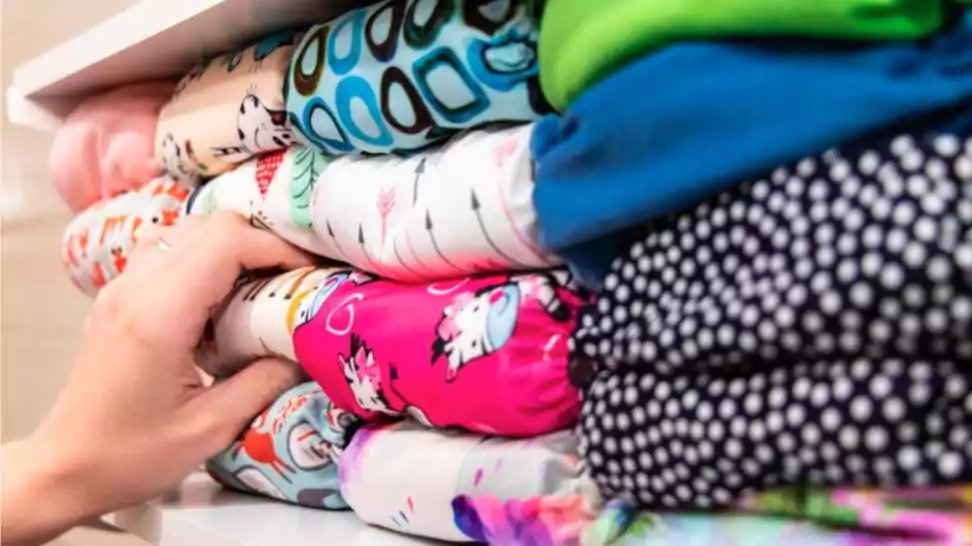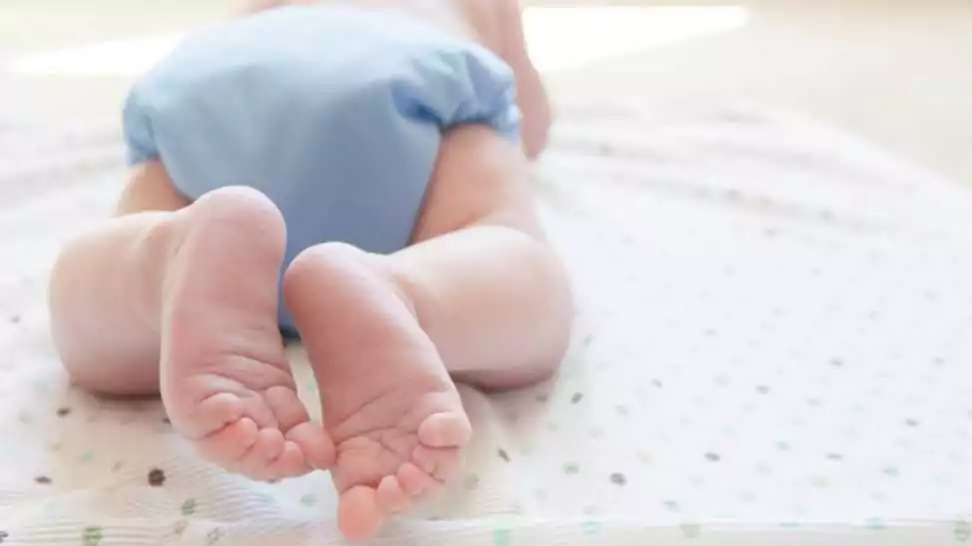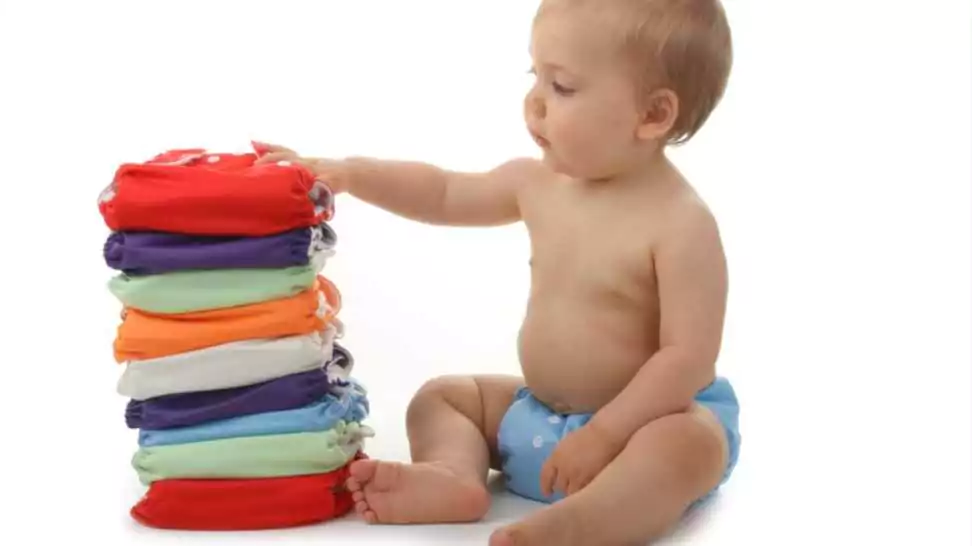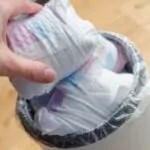How to Use Cloth Diapers for Newborns?

Welcoming a newborn into your family is an exhilarating experience filled with joy, challenges, and a lot of learning along the way. One of the early decisions new parents face is choosing between cloth and disposable diapers. In this blog, we’re diving deep into the world of cloth diapers, a choice that’s not only environmentally friendly but also beneficial for your baby in multiple ways.
Once a relic of the past, cloth diapers have made a significant comeback. Modern advancements have revolutionized their design, making them more convenient, absorbent, and easy to use than ever before. They offer a sustainable alternative to disposable diapers, which are a major contributor to landfill waste.
In this comprehensive guide, we will not only cover the basics of how to use cloth diapers but also introduce you to Super Bottom Cloth Diapers – a popular choice among parents for their quality, convenience, and baby-friendly designs.
1 Understanding Cloth Diapers
A Brief History and Evolution
The journey of cloth diapers from basic clothes wrapped around a baby’s bottom to the modern, sophisticated designs we see today is a fascinating one. Initially, cloth diapers were simple cotton fabrics that parents would fold and secure with safety pins. Over time, as the need for more convenient and effective solutions grew, so did the design and functionality of cloth diapers. By the late 20th century, cloth diapers had evolved with the addition of absorbent layers, waterproof covers, and user-friendly fasteners, making them an attractive alternative to disposable diapers.
Types of Cloth Diapers in the Market

Today, parents are presented with a variety of cloth diaper options, each suited to different needs and preferences:
- Prefolds and Flats: In the traditional style, these are rectangular cloths that can be folded in various ways and secured with a cover.
- Fitted Diapers: Made from absorbent material with elastic around the legs and waist, these require a waterproof cover.
- Pocket Diapers: Featuring a pocket for inserting absorbent pads, these are a favourite for their ease of use and adjustability.
- All-in-Ones (AIOs): As the name suggests, these diapers combine everything in one piece – an absorbent layer and waterproof cover – for maximum convenience.
- Hybrid Diapers: Offering the flexibility to use either a cloth insert or a disposable one, hybrids are great for parents who want the best of both worlds.
The Special Features and Benefits of Super Bottom Cloth Diapers

Super Bottom Cloth Diapers have emerged as a popular choice among modern parents due to their unique features:
- High-Quality Materials: Made with gentle, baby-friendly fabrics that are durable and comfortable.
- Advanced Absorbency: Designed to keep moisture away from your baby’s skin, ensuring they stay dry and comfortable.
- Adjustable Sizing: These diapers can be resized to fit babies as they grow, making them a long-term investment.
- Eco-Friendly: Super Bottoms emphasises sustainability, reducing environmental impact by avoiding disposable waste.
- Stylish Designs: They come in a variety of colours and patterns, making diapering fun and fashionable.
- Ease of Cleaning: Designed for hassle-free washing and quick drying, making maintenance a breeze for busy parents.
2 Preparing for Cloth Diapering
Embarking on the cloth diapering journey requires some preparation to ensure a smooth experience for both you and your newborn. Here, we’ll discuss the essential supplies, setting up a diapering station, and crucial steps like preparing your Super Bottom Cloth Diapers for their first use.
Essential Supplies for Cloth Diapering a Newborn
Before you start, stock up on these must-have items:
- Cloth Diapers: Depending on your washing frequency, you’ll need about 20-30 diapers for a newborn.
- Absorbent Inserts or Liners: These are necessary for added absorbency, especially for night time use.
- Waterproof Diaper Covers: If you’re using Prefolds, flats, or fitted diapers, you’ll need these to prevent leaks.
- Wet Bags: For storing soiled diapers when you’re out and about.
- Diaper Sprayer: A handy tool for removing solid waste from the diapers before washing.
- Cloth-Friendly Diaper Rash Cream: Ensure it’s compatible with cloth diapers to avoid affecting absorbency.
- Diaper Pail or Large Wet Bag: For storing used diapers at home until laundry day.
Setting Up a Diapering Station
Having a well-organised diapering station can make diaper changes more efficient and less stressful. Your station should include:
- A comfortable changing pad or table.
- A stash of clean cloth diapers, inserts, and covers.
- Wipes (cloth or disposable), diaper rash cream, and hand sanitiser.
- A diaper pail or wet bag for soiled diapers.
- Additional accessories like diaper liners or snappies, if you’re using Prefolds or flats.
Preparing Super Bottom Cloth Diapers Before First Use
Proper preparation of your Super Bottom Cloth Diapers is crucial for maximising their absorbency and lifespan. Follow these steps:
- Washing: Wash your new Super Bottom Cloth Diapers before the first use. This removes any natural oils or residues and enhances absorbency. Use a mild, cloth-diaper-friendly detergent and avoid fabric softeners and bleach.
- Drying: Air drying is the best option to preserve the fabric’s integrity, although many cloth diapers can be tumble-dried on a low heat setting.
- Multiple Washes: Natural fibre diapers may require multiple washes (up to 5-6 times) to reach their full absorbency. Synthetic ones usually need just 1-2 washes.
- Check the Manufacturer’s Instructions: Always refer to the specific washing instructions provided by Super Bottoms, as some materials may have special care requirements.

3 How to Use Cloth Diapers for Newborns?
Transitioning to cloth diapers can seem daunting at first, but with a little practice, it becomes a simple and rewarding routine. In this section, we’ll provide a step-by-step guide on how to properly fit a cloth diaper on a newborn, share tips for ensuring comfort and preventing leaks, and offer specific instructions for using Super Bottom Cloth Diapers.
Step-by-Step Guide to Fitting a Cloth Diaper
- Preparation: Lay the cloth diaper flat on the changing table. If you’re using a prefold or flat, fold it into the desired shape first.
- Lift the Baby: Gently lift your baby’s legs and place the diaper under them. The back of the diaper should be level with the baby’s waist.
- Folding the Front: For newborns, you may need to fold down the front of the diaper to make space for the umbilical cord stump.
- Securing the Diaper: Bring the front part up between your baby’s legs to their belly. If you’re using a diaper with snaps or Velcro, fasten it snugly but ensure it’s not too tight. There should be enough room to slip two fingers between the diaper and your baby’s stomach.
- Adjusting for Fit: Check around the legs and waist for any gaps to ensure a good fit and prevent leaks. The diaper should be snug but not too tight.
Tips for Comfort and Leak Prevention
- Right Size: Make sure the diaper fits your baby well. A diaper that’s too big or too small can cause leaks.
- Change Frequently: Newborns typically need diaper changes every 2-3 hours and after every feeding.
- Proper Absorbency: Use extra inserts for night time or for heavy wetters to increase absorbency.
- Fit Check: Regularly check the fit around the legs and waist, as a growing baby will need adjustments.
Using Super Bottom Cloth Diapers
Super Bottom Cloth Diapers are designed for ease of use and adjustability:
- Adjusting Sizes: Super Bottom diapers often come with adjustable snaps that allow you to resize the diaper as your baby grows. Start with the smallest setting for newborns and expand as needed.
- Insert Usage: Place the absorbent insert inside the pocket of the diaper. For newborns, you might need only one insert, but as your baby grows, you can add more or use more absorbent inserts for increased protection.
- Checking the Fit: Ensure that the diaper is snug around the waist and thighs. With Super Bottoms, the elastic and snap closures make it easy to achieve a good fit.

4 Maintenance and Care
Proper maintenance and care are essential for the longevity and effectiveness of cloth diapers. In this section, we’ll cover the best practices for washing and drying cloth diapers, how to handle stains and odours, and provide specific tips for the long-term care of Super Bottom Cloth Diapers.
Washing and Drying Cloth Diapers
- Pre-Wash: Rinse off any solid waste using a diaper sprayer or dunk and swish the diaper in the toilet. For exclusively breastfed babies, their stools are water-soluble and can go directly into the wash.
- Wash Routine: Use a cloth-diaper-friendly detergent. Avoid fabric softeners and bleach, as they can reduce absorbency and irritate your baby’s skin.
First Wash: Run a cold cycle to remove any remaining waste and stains. - Main Wash: Follow with a hot cycle (check the diaper’s care label for maximum temperature) to thoroughly clean the diapers.
- Wash Routine: Use a cloth-diaper-friendly detergent. Avoid fabric softeners and bleach, as they can reduce absorbency and irritate your baby’s skin.
- Drying: Air dry the diapers when possible, as this is gentlest on the materials and the environment. If you use a dryer, opt for a low-heat setting. Avoid direct sunlight for coloured diapers to prevent fading.
Dealing with Stains and Odours
- Stains: Sun-bleaching is a natural and effective way to deal with stains. Lay the wet diapers in direct sunlight for a few hours.
- Odours: If diapers start to develop an odour, this can be a sign of detergent build-up or not enough detergent being used. Strip the diapers by washing them with a small amount of dishwashing soap (followed by several rinse cycles) or use a commercial diaper stripping agent.
Long-Term Maintenance Tips for Super Bottom Cloth Diapers
- Regular Inspection: Check the elastics and fastenings regularly to ensure they’re in good working order.
- Proper Storage: Store clean, dry diapers in a cool, dry place to prevent mildew and fabric deterioration.
- Rotating Diapers: Rotate your stock of diapers regularly to ensure even wear and tear.
- Avoiding Harsh Chemicals: Stick to the recommended cleaning agents and avoid any harsh chemicals that could damage the fabric or affect absorbency.
5 Troubleshooting Common Issues
While cloth diapering is generally straightforward, certain issues may arise. In this section, we’ll tackle common problems such as diaper rash, leaks, and fit issues, with a focus on newborns and specific tips for Super Bottom Cloth Diapers.
Diaper Rash
- Causes: Diaper rash in cloth-diapered babies can be caused by wetness sensitivity, detergent residue, or infrequent diaper changes.
- Prevention: Change diapers frequently, ensure thorough rinsing during washing, and consider using a fleece liner to keep moisture away from the skin.
- Treatment: Use a cloth-diaper-safe rash cream, and give your baby some diaper-free time to let the skin breathe.
Leaks
- Fit Issues: Ensure the diaper fits snugly around the waist and thighs. If there are gaps, adjust the fit or consider trying a different style or size.
- Absorbency: If leaks occur due to saturation, add more absorbency with extra inserts, especially at night.
- Diaper Condition: Check the diaper’s condition. Over time, elastics can wear out and waterproof layers can degrade.
Fit Issues
- Newborn Considerations: Newborns need a smaller fit. Look for diapers specifically sized for newborns or ones with adjustable sizing options.
- Proper Application: Ensure the diaper is not too tight or too loose. You should be able to run two fingers around the waistband and between the diaper and the baby’s skin.
Special Considerations for Newborns
- Umbilical Cord Care: Some newborn diapers have a snap-down or fold-down front to keep the diaper away from the umbilical cord stump.
- Frequent Changes: Newborns may need more frequent changes to prevent rashes and leaks due to their delicate skin and liquid-only diet.
Tips Specific to Super Bottom Cloth Diapers
- Adjusting Absorbency: Super Bottoms offer customizable absorbency. Experiment with different insert configurations to find what works best for your baby.
- Snug Fit: Utilise the adjustable snaps to get a snug, comfortable fit around your new born’s waist and legs.
- Washing Instructions: Follow Super Bottoms’ specific washing instructions to maintain the diaper’s integrity and absorbency.
Environmental and Economic Impact
The decision between cloth and disposable diapers isn’t just about baby care; it also involves considering their environmental and economic implications. In this section, we delve into the environmental benefits of using cloth diapers, provide a cost analysis comparing them with disposables, and highlight how Super Bottom Cloth Diapers contribute to eco-friendliness and cost-effectiveness.
Environmental Benefits of Cloth Diapers
- Reduced Waste: Disposable diapers are a significant contributor to landfill waste. It’s estimated that they can take up to 500 years to decompose. In contrast, cloth diapers can be reused for years and even passed down to multiple children, significantly reducing waste.
- Lower Resource Consumption: The production of disposable diapers consumes large amounts of water, wood pulp, and plastic. Cloth diapers, on the other hand, require fewer resources over their lifetime.
- Decreased Chemical Exposure: Disposables often contain chemicals like dioxins, sodium polyacrylate, and dyes, which have environmental impacts during production and disposal. Cloth diapers offer a chemical-free alternative.
Cost Analysis: Cloth vs. Disposable Diapers
- Initial Investment: Cloth diapers require an upfront investment, but this cost is often recouped over time. For disposables, the ongoing expense can add up significantly over the diapering years.
- Long-Term Savings: The cost of cloth diapers is primarily upfront. When taken care of, they can last through multiple children. In contrast, the recurring cost of disposables can amount to thousands of dollars per child.
- Additional Expenses: Consider the cost of water, energy, and detergent for washing cloth diapers. However, these costs are generally lower than continuously buying disposables.
Super Bottom Cloth Diapers: Eco-Friendly and Economical
- Sustainability: Super Bottom Cloth Diapers emphasise reusable materials, reducing waste and resource consumption.
- Durability: These diapers are designed for longevity, making them a cost-effective option in the long run.
- Reduced Chemical Footprint: By avoiding the chemicals typically found in disposables, Super Bottoms are an environmentally responsible choice.
6 Wrapping Up
As we wrap up this comprehensive guide on using cloth diapers for newborns, including the specific benefits of Super Bottom Cloth Diapers, let’s revisit the key points we’ve covered and leave you with some final thoughts to consider as you embark on your cloth diapering journey.
To all new parents considering this path, remember that cloth diapering is not only a loving choice for your baby but also a responsible choice for the planet. It’s a journey worth embarking on, filled with learning experiences and rewards.
Super Bottom Cloth Diapers stand out as an exemplary choice in this journey. Their ease of use, adjustability, and commitment to quality and sustainability make them a practical, eco-friendly, and cost-effective option for conscientious parents.
In conclusion, whether you’re drawn to cloth diapering for its environmental impact, cost savings, or baby-friendly benefits, we hope this guide has provided you with valuable insights and the confidence to give it a try. Happy diapering!
Community Q&A
About This Article
This article has been viewed 141 times.



